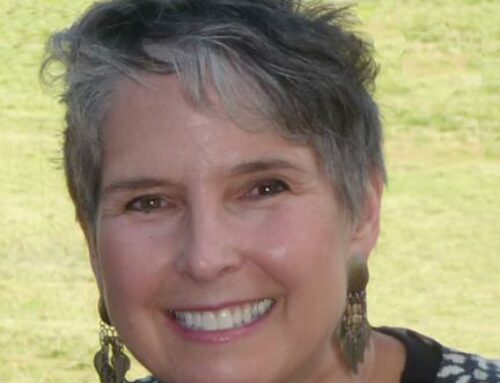Click here to learn more about Anna’s instructional painting video,
“Creating Vibrant Skin tones”
See more of Anna’s work by visiting Art Work by Anna Rose Bain
What’s your type? Blonde, redhead, brunette? If you love painting portraits, chances are you’ve worked with them all. Some are easier than others. The trickiest, in my own experience, are blondes and redheads. Many artists get frustrated with these two types, perhaps because they have preconceived ideas about which colors they should use, and because these types usually have finer hair, which is therefore more transparent and easily affected by the surrounding environment.
It has taken me a long time to figure out the nature of hair, especially blonde hair, which is what I’ll be discussing today. As a natural blonde myself, I often practice painting blonde hair under different lighting conditions by doing self portraits. Hair looks very different under warm light versus cool light. It also picks up on surrounding colors. For example, if I set up outdoors in the middle of spring when everything is fresh and green, those greens are going to heavily impact both skin and hair color and I’ll find myself using a much larger assortment of greens and blues than I would under my usual studio lighting. Under warm light, the hair will naturally appear more yellow, orange, or red. So the first rule of thumb when painting hair is to be aware of your light source and surrounding environment.
Here are some other tips I’ve picked up over the years:
• Hair is transparent, so individual strands do not cast shadows, but locks (masses) of hair do.
• Blonde hair is usually very fine and must be painted delicately. Have your sable brushes on hand, but don’t over-blend either.
• There is usually a lot more green in blonde than yellow. This is one of the biggest mistakes I see with beginning artists. Don’t assume that blonde hair is yellow –
again, remember your light source and paint accordingly.
• The shadows in blonde hair are much darker than you think they are. Get the values right and you’ll still be able to create the illusion of “blonde”, even if it’s
very dark.
• The fine hairs at the top of the forehead, framing the face (where the hair meets the scalp), are quite often the same value as the skin itself. Paint them SOFTLY.
• Try using complimentary colors for the tonal wash or base layers when you start your painting. My hair stylist uses a purple toner on my hair to knock down
brassiness; as an artist, you can approach your painting similarly. By using purples, greens, and earth colors in the darker and middle tones, you will cause your
brighter colors and values to pop beautifully.
• Hair is fun because it creates numerous gradients in value, especially when it’s curly or wavy (I talk about this in my video, “Creating Vibrant Skin Tones”). It
should reflect the shape of the head and be part of the whole. Don’t paint it as a separate “thing”.
• My palette for blonde hair always includes: titanium white, lemon yellow, yellow ochre pale, transparent oxide red and brown, ultramarine blue, alizarin crimson,
ivory black (never straight from the tube, but used as a cool to mix with other colors), and my absolute go-to: viridian green.

In my next blog post, I’ll talk about red heads. Remember, blondes are only “dumb” if they are painted badly!
Click here to find out more information on Anna’s instructional painting video, “Creating Vibrant Skin Tones”







What is the link to one of your class you published last year right after Portrait Society convention. I bought it but can’t remember how to get to it
Hyeok, If you mean Anna’s Video you can click on this link to order.
https://bellamuseproductions.com/product/creating-vibrant-skin-tones-anna-rose-bain/